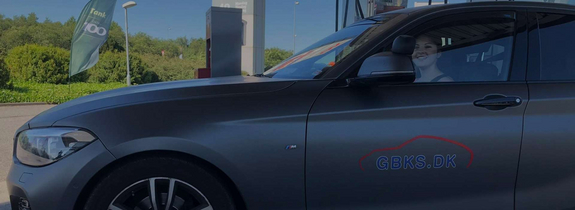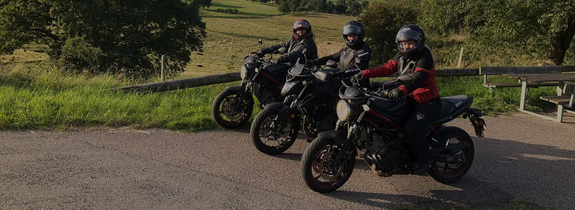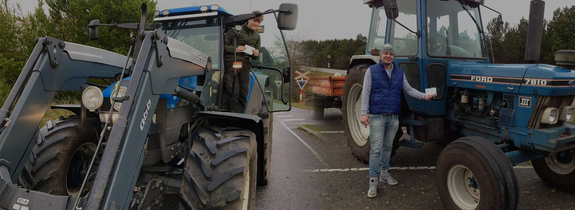Engine and Exhaust:
- The engine must be dry and sealed to prevent oil or coolant leaks, and it should not emit black smoke.
- The exhaust pipe must be securely attached without any holes from the engine to the outlet. There should be no unnecessary noise or black smoke.
- The motor oil level must be sufficient. Pull up the dipstick (often yellow) and wipe it clean. Wait a few minutes for the oil to settle to the bottom. Insert the dipstick again, pull it up, and read the level, which should be between the minimum and maximum marks.
- Many newer cars have an electronic check for oil level via the car's computer, so the manual must be consulted for this.
- The coolant level must also be sufficient, and it can be checked on a visible container in the engine compartment.
- The coolant level should be between the minimum and maximum marks.
- Many newer cars have a warning light in the instrument panel that alerts for low coolant level.
Visibility:
- All windows must be clean and transparent.
- Windscreen wipers must be in good condition to ensure clear vision in rainy weather.
- There must be enough windshield washer fluid for the journey.
- In some cars, the fluid level can be measured on a hose that is pulled up from the container, while others have a warning light in the instrument panel for low washer fluid level.
- The mirror glasses must also be clean and properly adjusted for the driver.
Tires and Wheels:
- Tires and wheel rims must be intact and undamaged.
- All four tires must have at least 1.6 mm of tread depth in the main pattern. Most tires have a raised area in the pattern that indicates 1.6 mm. Most tires refer to this raised area on the tire's sidewall, marked with TWI or an arrow.
- All four tires must be of the same type:
- Either: 4 summer tires or 4 winter tires, 4 all-season tires, or 4 studded tires.
- Studded tires may be used from November 1st to April 15th.
- It is legal to mount two pairs of tires with different brands, for example, Michelin summer tires on the front axle and Pirelli summer tires on the rear axle.
- Tires must be inflated to the correct tire pressure, which can be found in the car's owner's manual or possibly on the pillar behind the left front door or under the fuel filler cap.
- NOTE: You are responsible for adjusting the tire pressure if you significantly change your load (load includes the combination of passengers and baggage = more load requires higher tire pressure).
- Some tires are designed to be mounted in a specific direction. If the tire is designed this way, there will be an arrow on the side of the tire indicating the correct direction of rotation.
- Wheel rims must be intact and properly tightened.
- Wheel bearings must not be damaged (check for any noise or vibrations from the wheels).
- NOTE: Before driving abroad during the winter season, you should check the country's regulations for tires and tread depth at: http://www.fdm.dk/biler/biludstyr/daek/regler-vinterdaek-udlandet
Shock Absorbers:
- Check by firmly pressing down and quickly releasing at the four corners of the car.
- The corner that is pressed down should immediately return to a stable position.
- If possible, further check for any oil leakage on the shock absorbers, but this is not a requirement for the driving test.
Steering System:
- The steering system must be easy, safe, and quick to operate.
- The steering system should be self-centering, meaning the car automatically wants to drive straight.
- There should be no unusual sounds when turning the steering wheel.
- There must be no play in the steering system (play refers to the part of the steering wheel that can be turned without the wheels following).
- To check for play, perform the test with the engine running, where the slightest movement of the steering wheel should move the wheels in both directions. This test can be done by standing with the car door open and turning the steering wheel.
- It is best to perform the check with the wheels in the straight-ahead position.
- The right front wheel can only be checked with the assistance of another person.
- Most newer cars have electric power steering, in which case there is nothing to check. Some cars (especially older ones) have hydraulic power steering, and these have a power steering fluid reservoir where the fluid level should be between the minimum and maximum marks.
- The driver should know what type of power steering the car has.
Brakes:
Service Brake (Car's Foot Brake):
- The service brake must be able to brake the car quickly, safely, and effectively at all speeds and loads.
- It should be a 2-circuit hydraulic brake system that operates on all 4 wheels (hydraulic = fluid pressure from brake fluid).
- If one circuit fails, the other circuit acts as the emergency brake.
- If one circuit fails, it may result in the brake pedal traveling further than usual. In such a case, further driving is prohibited.!
- If the brakes fail in an antique car with only one brake circuit, the handbrake must be used as an emergency brake.
Parking Brake (Handbrake):
- The parking brake must be mechanical and work on both rear wheels. Newer cars activate the parking brake via an electric motor that pulls on the handbrake cable.
- The handbrake must be able to hold the car on a steep hill and should be locked when pulled up (unlocked by pressing the button).
Service Brake (Foot Brake) Inspection:
- The brake pedal should have a non-slip surface.
- The brake pedal should not be loose and should not move from side to side.
- The brake pedal should feel firm and solid when pressed.
- The brake pedal should not be able to be fully depressed to the floor of the car.
- The brake pedal should not sink under constant pressure.
- The brake pedal should have approximately 1 cm of free play before braking starts.
Vacuum Booster/Power Brake Unit Inspection:
- Pump the brake pedal 3-4 times with the engine off (you should feel the pedal getting a bit harder).
- Keep the pedal pressed down.
- Start the engine while keeping the brake pedal pressed down.
- When the engine is running, the brake pedal should now sink to its original position.
If the pedal does not sink, it indicates that the vacuum booster is not working.
Brake Fluid:
- The fluid level in the reservoir should be between the minimum and maximum marks.
- The driving school recommends that you never top up the brake fluid yourself (only professionals should handle brake fluid for several reasons).
- In a properly functioning brake system, the minimum mark on the brake fluid reservoir means the brakes are worn and need replacement.
Lights:
General requirements for lights:
- Both lights in a pair must have the same intensity and color (always replace bulbs in pairs).
- All light lenses must be intact and clean.
- Lights must have an E approval code written on the lens.
- Bulbs must be correctly installed in the socket.
- All lights must function properly!
Position Lights / Parking Lights:
- Always 2 lights.
- Must emit white or yellow light.
- Must be visible from at least 300 meters away.
- Must not dazzle oncoming traffic.
Dipped Headlights / Low Beams:
- Must emit white or yellow light.
- Must illuminate the road for at least 30 meters.
- Must not dazzle oncoming traffic.
- Must be asymmetrical to the right (illuminating slightly further to the right to detect pedestrians and bicycles earlier).
- The low beam must have a drop of 1%.
How to check the 1% drop:
The car should be parked on a flat surface. Stand close to the headlight and mark the top edge of the light on your leg with your finger. Then, step 1 meter away from the headlight, and now the top edge of the light should have dropped by at least 1 cm.
Main Beam Headlights / High Beams:
- 2 lights with white or yellow light.
- Must illuminate the road for at least 100 meters.
- May be dazzling (as they are only used when alone on the road - i.e., not to dazzle anyone :-).
- Must have a blue indicator light on the instrument panel.
Taillights:
- 2 lights with red light.
- Must be visible from at least 300 meters away.
- Must not be dazzling.
Brake Lights / Stop Lights:
- 3 lights with red light.
- Must shine significantly brighter than the taillights.
- Must not be dazzling.
- Brake lights can only be checked with assistance.
Reflectors:
- 2 reflectors that must be red and mounted at the back of the car or inside the taillights.
- Must be CE approved.
- Reflectors must not be triangular.
- If the vehicle is longer than 6 meters, yellow reflectors and marker lights must be installed on the sides.
License Plate Lights:
- There must be at least 1 light.
- The light must be white.
- The light must be strong enough to read the license plate from at least 20 meters away.
Indicators:
- There must be 6 indicators.
- Yellow or orange light.
- Must be visible in sunlight.
- Must flash 60-120 times per minute (1-2 times per second).
Hazard Warning Lights:
- The button must be identifiable. The button is usually red with a triangle and activates all 6 indicators.
Daytime Running Lights (DRL):
(Not part of the driving test questions).
New cars have automatic DRL with LED lights. However, it can also be the case that the car uses low beams or fog lights as DRL.
DRL often only activates the front lights (the rear lights remain off). It is therefore essential for the driver to be aware of the lighting conditions, and to switch to low beams or high beams using the light switch when:
- the sun has set until sunrise,
- in fog,
- in mist,
- in rain,
- in snow.
Side Marker Lights:
- If the vehicle is wider than 2.1 meters, two marker lights must be installed on each side, emitting white light at the front and red light at the rear.
Horn:
- The horn must have a loud and constant tone (usually located in the center of the steering wheel).
Vehicle Documents:
- In Denmark, only the Registration Certificate is required if towing a trailer. When borrowing a trailer, you must also borrow a copy of the trailer's registration certificate. The driver is responsible for checking that the car and the trailer are legally coupled and that the driver's license is sufficient.
- In foreign countries, original Registration Certificates must always be carried.
- Read more about trailers below.
Warning Triangle and High-Visibility Vest:
- In case of a breakdown or accident, the warning triangle must be placed behind the car,
- A, 50 meters on a regular road, and
- B, 100 meters on a motorway.
- The hazard warning lights can be activated simultaneously.
- It is recommended to always have at least one high-visibility vest in the car, easily accessible by the driver (this is a legal requirement in many foreign countries).
Towing of Vehicles:
- There must be a maximum distance of 4 meters between the two vehicles.
- If the distance is over 2 meters, the middle of the towline must be marked with something, e.g., a cloth.
- The speed must not exceed 30 km/h.
- Towing is not allowed on motorways.
Dimensions (Sizes/Weights) and Cargo:
Dimensions:
- Largest dimensions allowed are; 12 meters long,
- 4 meters high,
- 2.55 meters wide,
- 3,500 kilograms,
- and a maximum of 8 passengers.
Cargo and equipment on the car must not protrude more than 15 cm beyond the vehicle's widest point, but never exceed 2.55 meters.
If the cargo extends more than one meter beyond the rear or front of the vehicle, it must be clearly marked with something visible, such as a large plastic bag, an old light-colored T-shirt, or a pair of old shoes.
If this transportation is related to commercial activities, an approved cylinder in orange-red and white colors must be used.
The towing hitch on a regular family car should generally be loaded with a maximum of about 50 kg. On larger family cars and SUVs, the towing hitch/ball can be loaded a little more, but rarely over 65 kg.
Tractor:
Cargo and equipment on a tractor must not protrude more than 15 cm beyond the vehicle's widest point, but never exceed 2.55 meters (if it does, a rotating yellow light must be used). A yellow rotating beacon must also be used if the tractor has dimensions that exceed 4 meters in height, 12 meters in length, or 18.75 meters with a trailer.
If the cargo extends more than 1 meter beyond the front or rear of the tractor, it must be marked with a professionally reflective orange/white pole.
Trailer:
- The combination of the towing vehicle and the trailer must not exceed 18.5 meters in length.
- The trailer must not exceed 10 meters in length, measured from the coupling.
- The distance between the towing vehicle and the trailer must not exceed 2 meters.
- If the trailer has a width of 2.1 - 2.3 meters, it must not be more than 30 cm wider than the car.
- If the trailer has a width of 2.3 - 2.55 meters, it must not be more than 10 cm wider than the car.
- If the trailer is wider than the car, additional wider mirrors must be installed on the car.
- Trailers with a total weight over 750 kg must have brakes.
- If the trailer is equipped with brakes, it should be clearly felt that they are activated when moderately braking with a light load.
- Trailers over 750 kg must have brakes and a wire connecting the towing vehicle and the trailer. This wire must be fastened in a dedicated hole near the towing ball (must not be fastened around the ball). This wire will activate the trailer's emergency brake if the trailer becomes detached.
- There should be no play between the ball and the coupling, and the driver must ensure that they cannot be separated (lift firmly and check the red/green markings on the coupling).
- Normally, the ball should be loaded with a maximum of 50 kg on regular family cars and up to 75 kg on larger SUVs. The ideal pressure on the ball is 5% of the trailer's current total weight (e.g., total weight of 750 kg = 37.5 kg pressure on the ball).
- Lights must be checked before starting the journey. Unfortunately, trailer lights often have faults for various reasons.
- There must be red triangular reflectors at the rear of the trailer.
- The trailer must have the same lights at the rear as the towing vehicle (except for only 2 brake lights).
- If the trailer is used for transporting animals abroad, the vehicle must be equipped with springs and shock absorbers.
- However, for the well-being of the animals, it is strongly recommended that at least springs are installed to smooth the road.
With a B driving license, you can usually tow:
- what corresponds to a combination of the total weight of the car and trailer not exceeding 3,500 kg,
- and usually, a trailer with a total weight of 750 kg can always be towed if the car permits it.
Other conditions may apply, so always check on this link from FDM:
FDM Trailer Calculator



